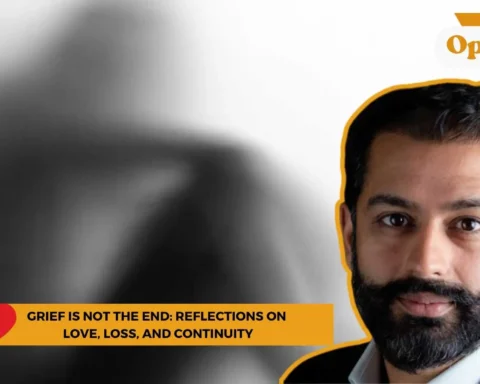Cinema once thrived as an art form that challenged audiences, explored complex ideas, and offered daring experiments in storytelling. The rise of corporate, profit-driven approaches in Hollywood and Bollywood has transformed filmmaking into a process ruled by predictable formulas, franchise-building, and risk aversion. The result is an industry that prioritizes marketability over originality, profit margins over cultural depth, and safe investments over artistic integrity.
The Franchise Model Is Becoming the Default
In Hollywood, studios invest heavily in expanding universes and sequels that guarantee steady revenue streams. The Marvel Cinematic Universe, the endless Star Wars spin-offs, and live-action Disney remakes dominate theater screens. When a franchise succeeds, the financial incentive to create more installments becomes irresistible. For example, “Fast & Furious” started as a street-racing film with modest aspirations and evolved into a billion-dollar juggernaut with multiple spin-offs.
Bollywood also nurtures this pattern. Production houses greenlight sequels like “Dabangg 2,” “Housefull 4,” and “Golmaal Again,” not because they demand new stories but because audiences recognize the brand. Instead of investing in unfamiliar ideas, producers leverage nostalgia and familiarity to secure predictable box office returns.
Remakes as a Formula for Revenue
The remake industry provides another illustration of how capitalism shapes cinematic trends. In the United States, Disney produces shot-for-shot remakes such as “The Lion King,” “Beauty and the Beast,” and “Aladdin.” The strategy converts a known intellectual property into a modern spectacle with advanced visual effects, ensuring that parents and children flock to theaters.
In India, filmmakers recycle successful South Indian films for Hindi-speaking audiences. “Kabir Singh,” adapted from the Telugu film “Arjun Reddy,” exemplifies the impulse to repackage proven narratives rather than invest in new scripts. The decision relies on an established fan base and cultural familiarity, effectively minimizing risk.

Star Power and Market Calculations Eclipse Storytelling
Studios increasingly rely on casting bankable stars instead of nurturing original voices or innovative narratives. Producers measure the value of an actor by their social media following and the size of their international fan base. This practice sidelines emerging talent and reinforces superficial measures of success.
Hollywood often casts major celebrities in franchise films to maximize overseas ticket sales. Bollywood follows similar logic, placing stars like Salman Khan or Akshay Kumar at the center of nearly every big-budget project. Storytelling becomes secondary to the marketing potential of celebrity personas.
Original Scripts Face Systematic Neglect
Writers with unconventional stories often struggle to find support. Studio executives screen scripts through committees focused on market research and demographic analytics. This approach eliminates creative risks before they reach the production stage.
In Hollywood, original films like “Inception” or “Get Out” occasionally break through. These exceptions stand out because they reveal the degree to which fresh ideas have become anomalies. Christopher Nolan and Jordan Peele leveraged their reputations to convince studios to invest, but most new filmmakers lack such leverage.
Bollywood’s independent cinema, often referred to as “parallel cinema,” used to have a more robust infrastructure in the 1970s and 1980s. Films like “Ankur” and “Manthan” depicted real social issues. Corporate financing eventually absorbed or replaced this ecosystem with a commercial mindset that demands entertainment above all else.
Marketing Budgets Dwarf Creative Investment
Contemporary blockbusters reserve massive budgets for advertising campaigns, viral promotions, and merchandising deals. These expenses frequently exceed production budgets. For instance, “Avengers: Endgame” allocated hundreds of millions to global marketing initiatives, ensuring a record-breaking opening weekend.
This model leaves fewer resources for experimental storytelling or investment in new talent. Bollywood’s equivalent includes elaborate promotional tours and cross-branding arrangements with consumer products. A film’s success often hinges more on saturation marketing than narrative quality or artistic ambition.
The Consequences for Audiences and Culture
Audiences encounter a narrowing of cinematic possibilities. Theatrical releases revolve around superhero franchises, formulaic romantic comedies, and reboots. Original voices find outlets primarily on streaming services or niche festivals.
The cultural impact is significant. Films have traditionally provided a mirror to society, exploring difficult themes and sparking public discourse. When commercial pressures dictate content, studios avoid controversial topics, social critique, or creative experimentation. Bollywood increasingly produces glossy escapist fantasies instead of grappling with urgent societal questions.
In Hollywood, market-driven priorities reinforce a homogenized visual language and predictable story arcs. Diverse narratives often receive only token representation, packaged in ways that feel superficial rather than sincere.
A Future Shaped by Profit Motives
The transformation of cinema into a heavily commodified industry reflects capitalism’s broader impact on cultural production. Film studios behave like multinational corporations in other sectors, prioritizing quarterly earnings over the long-term vitality of the art form. Shareholder expectations require constant growth, which often means sequels, spin-offs, and reboots.
Streaming platforms have added new dimensions to this phenomenon. Netflix, Amazon Prime Video, and Disney+ collect enormous amounts of viewer data to predict what subscribers will watch next. The algorithmic model reinforces trends that have already proven successful, further reducing incentives to take creative risks.
Bollywood has embraced the same dynamics. Production houses release content on digital platforms to maximize exposure and generate revenue from multiple streams. Commercial viability remains the overriding principle in both industries.
Reclaiming Space for Creativity
Change remains possible when audiences actively support independent films and demand originality. Festivals, crowdfunding platforms, and alternative distribution channels can sustain projects that challenge conventions. Filmmakers committed to fresh storytelling often rely on grassroots efforts to bring their visions to life.
The erosion of film quality under capitalism is not inevitable. Filmmakers, critics, and audiences can resist the forces of commodification by valuing stories that take risks and explore complexity. Creativity flourishes when it becomes a priority rather than an afterthought.
Film as an art form deserves more than a business plan. Restoring its cultural and artistic significance requires a collective decision to value innovation over repetition and to recognize that profit alone cannot sustain the magic of cinema.

Let us know your thoughts. If you have burning thoughts or opinions to express, please feel free to reach out to us at larra@globalindiannetwork.com.









